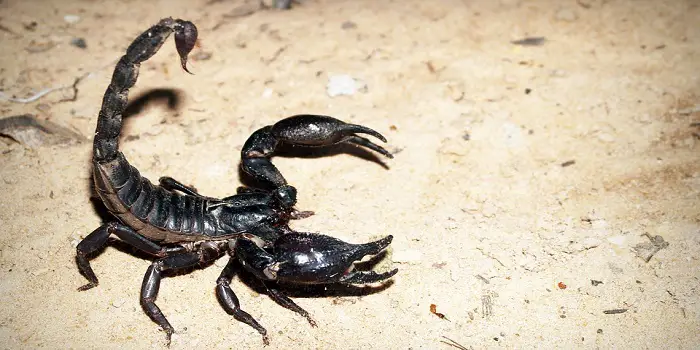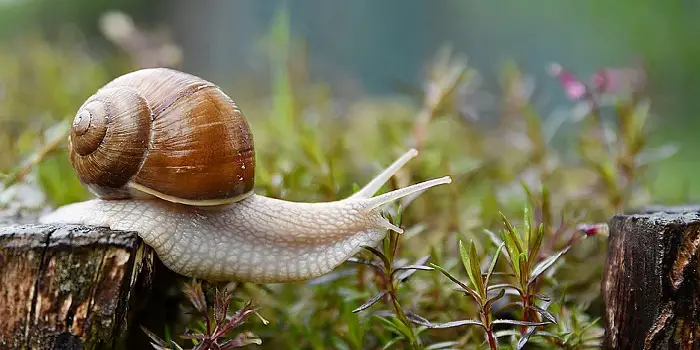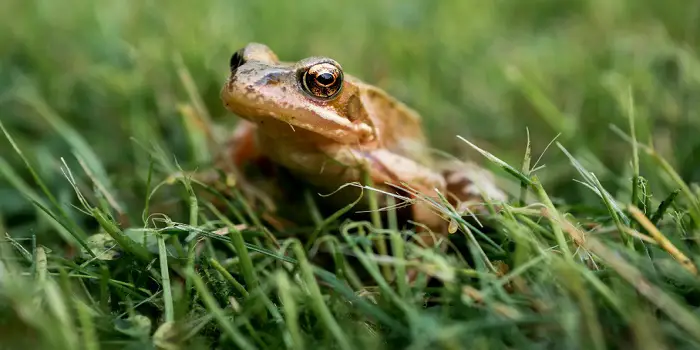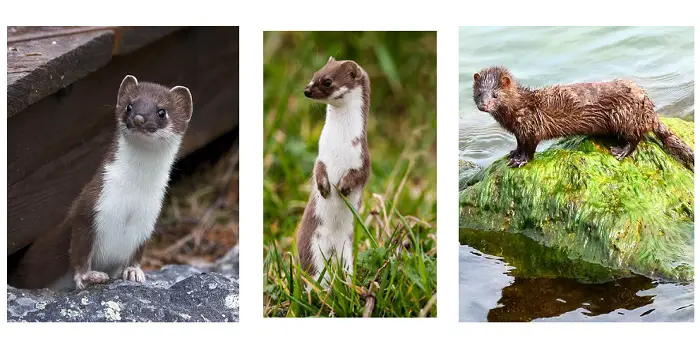
Stoats, weasels, and minks are small mammals (of the Mustelidae family) that are not often seen, but the damage they can cause is certainly noticeable.
It is highly recommended that their population be reduced, especially for those who care for poultry, game birds, and other species that are part of the diet of stoats, weasels, and minks.
But what are stoats, weasels, and minks?
Understanding these creatures will help you know how to get rid of them if they are on your property.
What are Stoats, Weasels, and Minks?
All three are small predators that, despite the difference in their names, they are quite alike in most respects.
They have long bodies, tails, and faces that resemble the common rat.
And all three present issues for property owners.
But stoats, weasels, and minks do have some unique differences that should be noted.
1- Stoats
Although small, the stoat does have long, sharp teeth that are used to bite into a wide variety of prey.
Stoats primarily hunt poultry and fowl on game farms, release pens, and wildfowl farms.
They can even hunt rabbits that are significantly larger in size by simply running them down until the rabbit becomes exhausted.
However, they prefer poultry and game fowl because they require less energy to catch.
2- Weasels
While they have many similarities to stoats, weasels tend to be a bit larger and have more endurance.
Like stoats, weasels prefer poultry and wild and game fowl farms.
Weasels are often confused with rats based on their appearance.
While catching either weasels or rats attacking their prey does not happen often, the results can be judged as to which predator was involved.
A weasel will typically bite the head or neck of their prey and then feast on their blood.
They do not drag off the carcass as a rat would.
3- Minks
Although minks are also small predators that tend to feast on waterfowl and birds that nest on the ground, a big difference between them and stoats and weasels is that they live near bodies of water.
Lakes, rivers, and large ponds are where you can find most American minks because they hunt ducks.
It’s also true that you may find weasels in such circumstances, but minks tend to stick close to waterways.
Why Get Rid of Stoats and Weasels?
If you do not have any prey on your property that these animals hunt, then you may wonder why they should be removed.
The answer is that while you rarely see one, they present a threat because of the diseases they carry.
If you have children playing on your property, they may run across one and, not knowing what it is, get bit.
In addition, their feces may also carry the bacteria and viruses that may harm you or those living on your property.
While the chances of being harmed may seem rare, it is avoidable if you remove them.
Plus, the chances of a pet or child getting bit is simply too great a risk to live with, especially when there are simple methods to keep them at bay or remove them totally from your property.
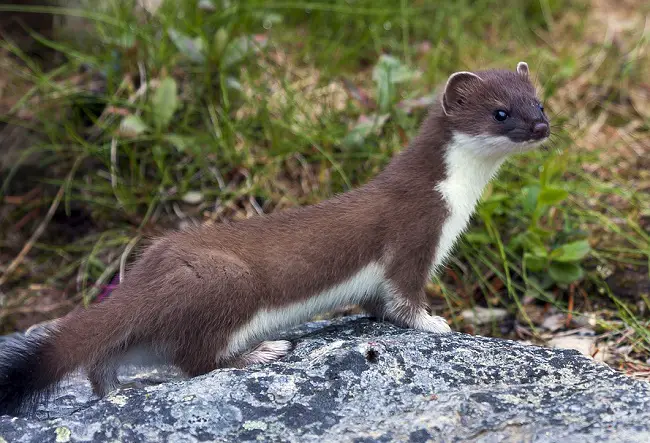
How to Get Rid of Stoats, Weasels & Minks?
Now that you know what to look for, the next step is to eliminate them from your property.
It is not recommended that you destroy their burrows or kill them on sight.
This is because they may be protected in your region of the country, so killing them outright is against the law.
Or, shooting them may cause the bacteria and viruses they carry to be splattered around.
Instead, you should focus on non-violent methods of prevention and removal.
They are just as effective and can help keep your property clear whether you have poultry or waterfowl or not on your property.
What follows are a few simple tips for prevention and eradication.
1- Fence
The best way to get rid of weasels and minks is to prevent them from being on your property in the first place.
Although small, both types of predators are not good climbers.
So, one of the best ways to prevent them from being on your property is to put up a gauge wire fence complete with sheeting.
The fence needs to be around five feet tall if you want to prevent a determined mink or weasel from climbing it.
Of course, that may not be practical if you own a large property, but you can surround the area where you keep the poultry with a high fence.
Just be sure that all openings large enough to allow a weasel or mink-in is covered.
2- Gasoline
To help ensure that your fence remains intact as minks or weasels might try to chew their way inside, place rags soaked with gasoline every 10 to 20 feet.
The odor from the gasoline is generally enough to cover the smell of the poultry or waterfowl you are trying to protect inside.
You will have to replace the rags every so often. Plus, you do not want them near places where fires are started.
3- Trap & Release
If you suspect a weasel or mink, then you can trap them by using the available professionally made trap complete with bait and mixed in with some water and foliage to make it appear a part of the environment.
This will help the minks or weasel enter as the natural appearance overcomes its caution.
Check the traps daily, and if you catch one, you can release it far away from your property.
4- Tips to Avoid Getting Bitten
It should be noted that direct confrontation with these animals is not recommended.
Although they are small and generally do not bite, they will if they feel threatened.
Getting bit by one of these animals is unpleasant as serious infections can result from the bacteria in their mouths.
In addition, they carry aggressive strains of the flu, such as the H5 or bird flu virus.
Plus, they are creatures that may carry rabies, so you’ll want to avoid direct contact.
You’ll want to wear protective gloves and long sleeve shirts when handling traps or cages with the animal inside.
If you do get bit, get treatment immediately and keep the predator for testing in case it might have rabies.
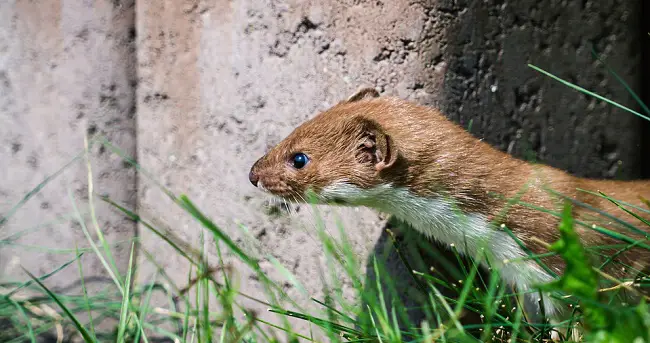
Additional Tips for Protecting Your Farm Buildings
Your farm consists of different buildings that include your home, barn, and chicken coop.
Plus, any buildings that may contain food that these predators may want.
To keep your farm safe, you will need to protect these buildings as much as possible.
a) Barn:
The barn can be problematic when keeping out stoats, weasels, and minks, especially if you have a large barn.
Securing the outside walls and sealing cracks is a good start, but given the large entrance, doors, and windows, it may be quite difficult to keep them out.
Once you have sealed up the outside, protect the food inside with bins that keep them up and away from the ground.
Then, set traps with wet cat food or scraps of meat. Be sure to wear gloves when handling the trap. Otherwise, the predators will smell your scent and stay away.
Once you trap them, take them several miles away and release them near a water source such as a lake, river, or stream.
b) Garden:
The good news is that minks, weasels, and stoats are carnivorous, so your plants should not be affected by their presence.
However, gardens tend to attract birds which in turn attract predators.
So, you should keep the birds away. Make sure you do not have any garbage nearby.
Set traps in areas that provide cover where a weasel, for example, might hide when hunting.
c) Coop:
Coops or hen houses present a different set of issues when trying to prevent weasels, stoats, and minks from coming in or trapping them when they do.
This is because they love to feed on eggs and eat young chicks and some adult chickens as well.
Their presence can disrupt the egg laying of the chickens, so you will need to provide proper protection.
The first step is to place a proper fence around the property, as mentioned earlier.
However, you can add to that protection by placing an additional fence around the chicken yard.
This double line of protection will keep out weasels and minks, especially if you use gasoline rags on the outer fence.
With both fences, it is recommended that you sink them into the earth by at least a couple of feet.
That way, the predators will not simply dig under the fence to get at your chickens.
Once the fence is in place, check out the coop to ensure that small animals cannot enter.
This means addressing any holes or cracks apart from the entrance for the chickens.
Wire mesh and metal plating may be needed to reinforce areas of the coop that allow entrance.
Remember that all three predators (namely stoats, weasels, and minks) are slim and determined, so you should seal up any holes large enough to allow them through.
Other Related Questions:
What animals belong to the Mustelidae family?
The family Mustelidae consists of 62 extant species.
These comprise carnivorous mammals such as stoats, minks, fishers, wolverines, weasels, martens, badgers, ferrets, and otters.
Why do Mustelids stink?
Most mustelids (except sea otters) have anal scent glands that can produce a strong-smelling secretion.
The foul secretion is often used by animals for purposes like marking territory, defending from predators, and also as a signal for sexual activities.
Why are Mustelids so strong?
For their size, mustelids are considered the strongest of all mammals (wolverine being the strongest of all).
Animals belonging to the Mustelidae family are always on the go, and for this reason, they use all the energy they get from eating food.
They also have the most flexible backbones (like rubber) which allow them to easily bend their body.
The Conclusion
Stoats, minks, weasels, and other mustelids, although small, can be dangerous and can cause significant problems, especially for nesting birds and chicks.
Due to their fierce nature, they can get aggressive and can even take down your pet dogs and cats (of much larger size than theirs).
The fact is these extremely violent animals should not be underestimated as they can also attack fully-grown adults if provoked.
Taking proper steps to keep them out of your property is the only viable solution by which you can keep yourself, your family, and your poultry safe.
Share the post "How to Get Rid of Stoats, Weasels, and Minks?"

Welcome to ProShieldPest.com. I am Tina Jones. I have been working as a pest removal professional in Winslow, Arizona lately. At present, I love to spend my time with my family as a retiree.
Here I share all my knowledge and experiences to help people understand better how they can stop pests at their homes without actually killing them. Hopefully, the information you will find here will help in safeguarding your home! You can check more about me here.

